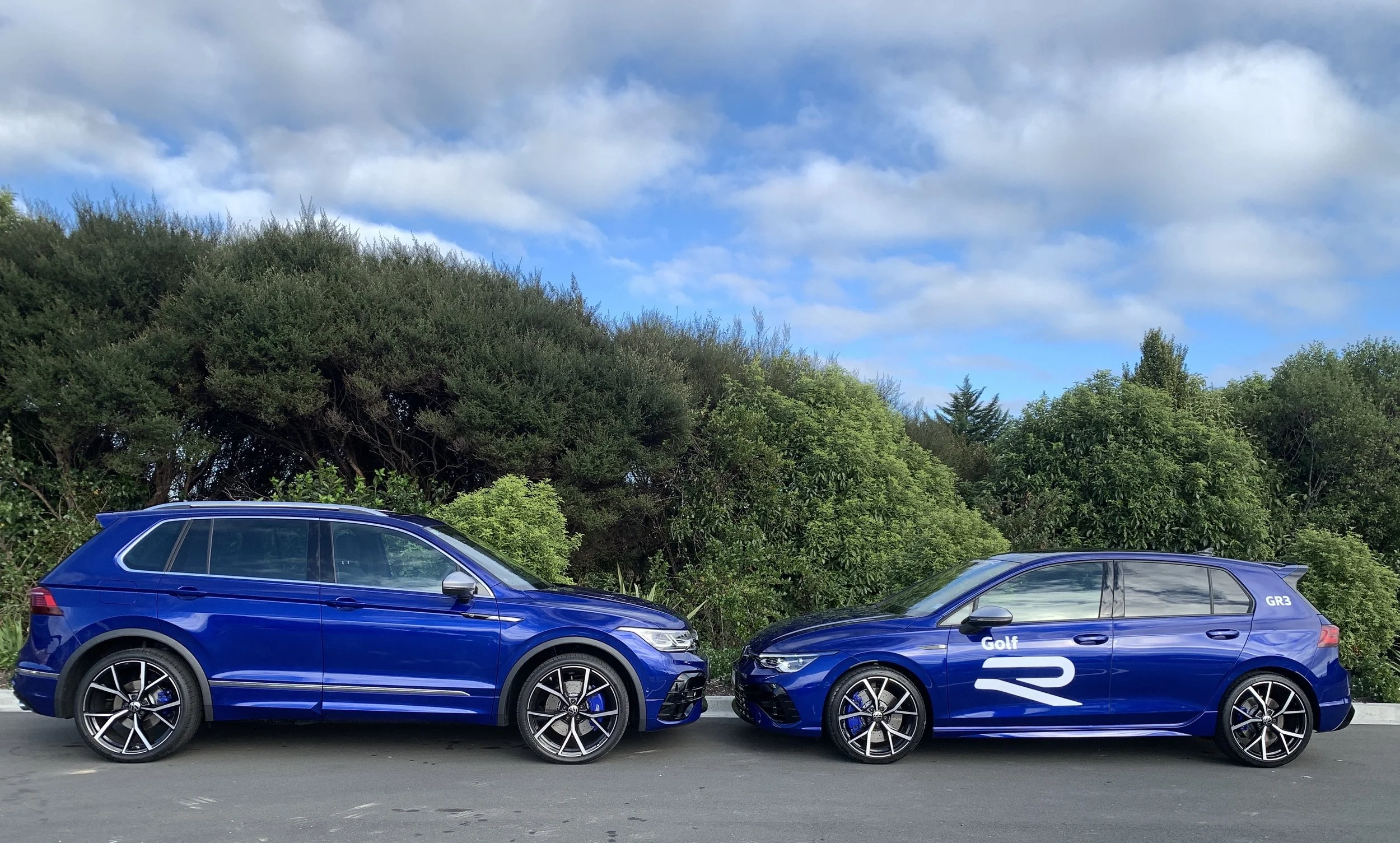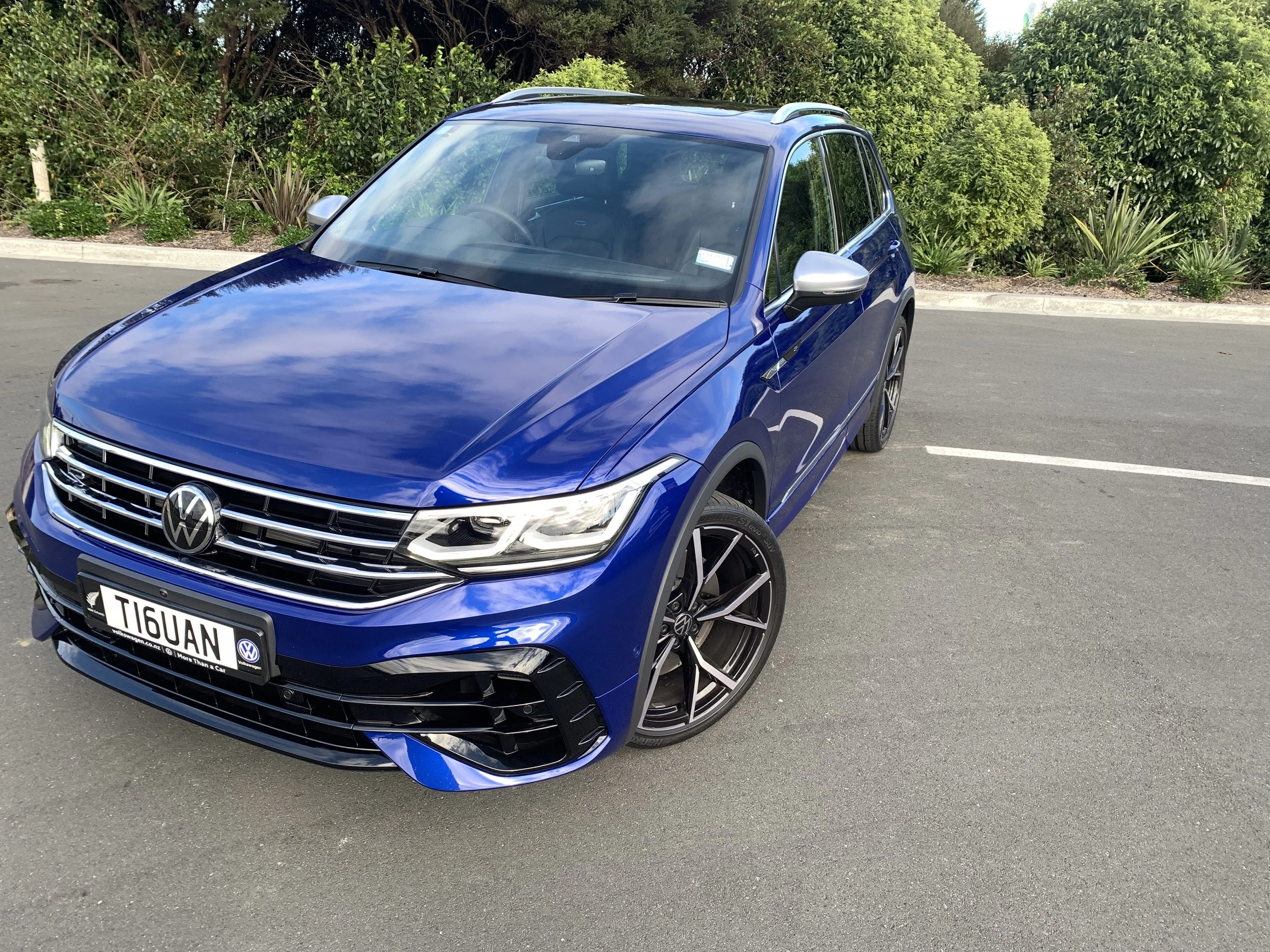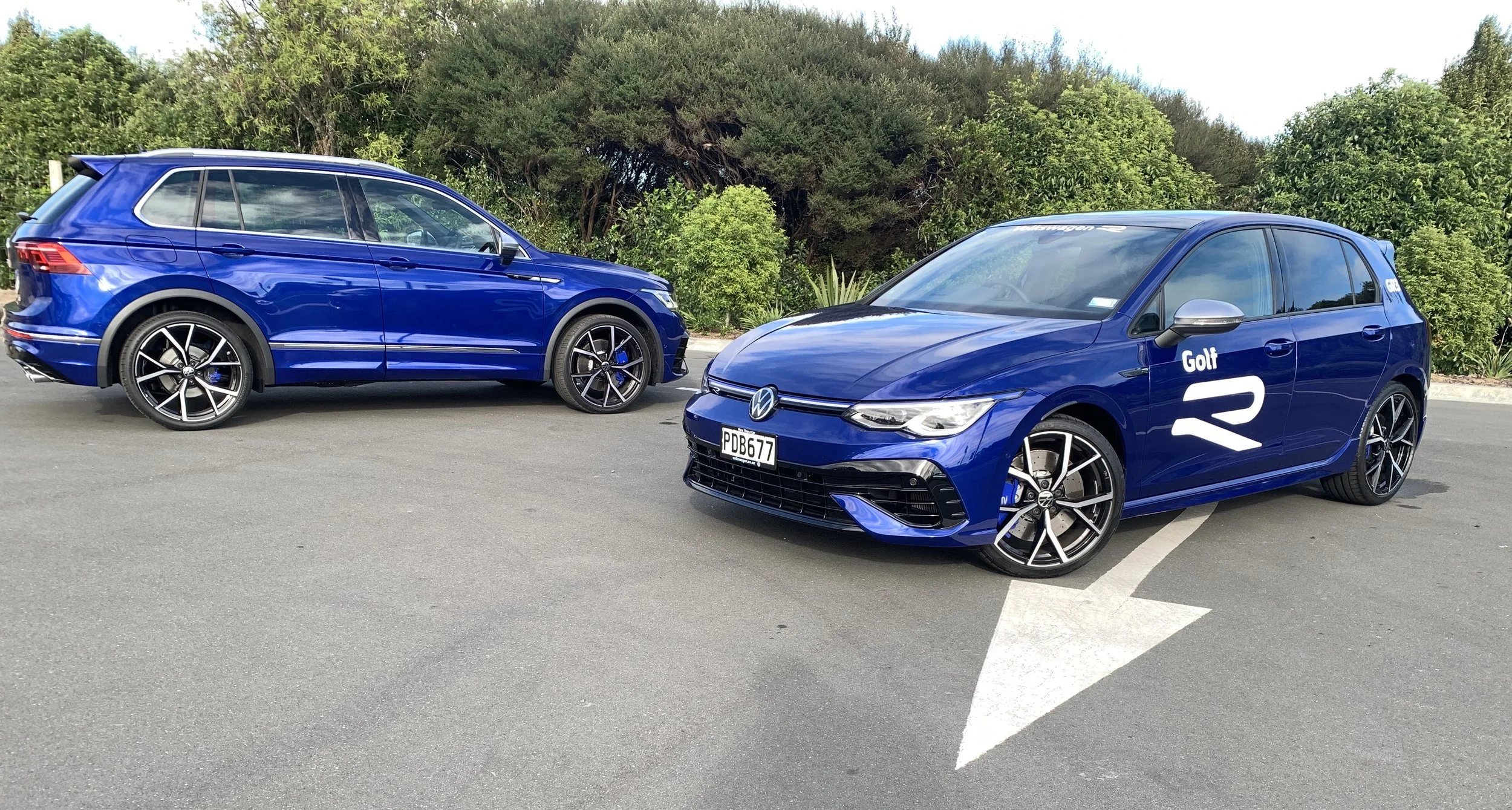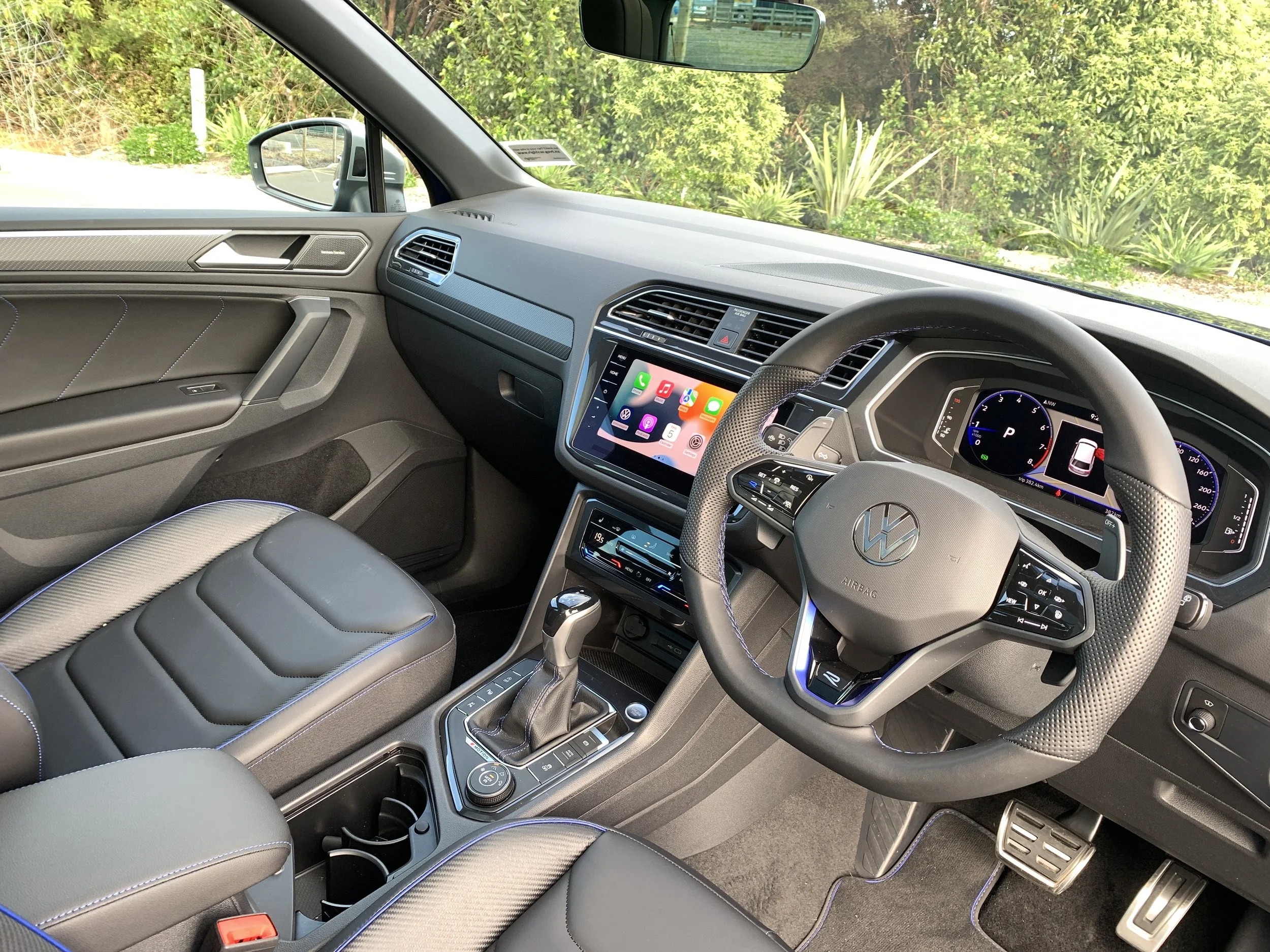Volkswagen Golf R/ Tiguan R first drive review: Special ops action
/The most steroidal road-legal Golf yet is a prime choice for naughty track action. A Tiguan with the same stomp surprises, too.
THE Nurburgring in its most daunting world-famous Nordschliefe configuration has 154 corners and a lap covers 20.8 kilometres’ – it’s a world away, in more than just layout, from Pukekohe, a circuit of one tenth the distance and with but nine bends.
Foremost among latest performance aids for the Volkswagen Golf R is ‘special’ mode; a sub-profile accessed via a ‘race’ setting that is specific to the Performance Pack availing purely to a First Edition variant that costs $5000 more than the standard car.
The colloquial name for ‘special’ mode is ‘Nurburgring setting’. It’s recognition that an assist with many influences, the primary ones being to ramp up to maximum the throttle map and also inhibit the direct shift gearbox from automatically upshift when reaching the redline in manual, was developed from driving many, many laps of that venue.
Built between 1925 and 1927, the place is ideal for that kind of work. It's a stupidly cool racetrack that features an incredible amount of complex corners, elevation changes and blind crests that leave you with your heart in your mouth constantly.
Three-time Formula 1 world champion Sir Jackie Stewart gave it its nickname, Green Hell (or Grune Holle), which remains to this day. VW is among many brands with performance vehicle development bases there. They say ‘R’ stands for racing. But really, when they talk about that and racing tracks, there’s just one place where it all comes together.
When you’re literally living half a world away, how literally is the ‘Nurburgring’ side of things to be taken?
In a video call to NZ media on the night prior to our drive, Jan Schiedek-Jacht, head of technical development for Volkswagen’s R performance sub-genre, was quick to clarify that very question. He straight away enforced that the magic this button enacts is not specifically optimised just for that one venue.
“You don’t need to come here to feel the benefit,” he explained from his office in Wolfsburg, Germany.
Any circuit in any country will do. Or, for that matter, any decent road.
“Every country with roads that have ups and downs and are good to drive will be very enjoyable in that mode.”
‘Special’ mode certainly made a big difference to the Golf R on its home turf.
The new model set an optimal Nordschliefe lap time of seven minutes and 51 seconds in fully legal road trim. That betters the predecessor’s best result by 14 seconds and leaves this four-wheel-drive five-door hatch at equal pegging with two far more powerful benchmark cars in their own categories, the BMW M3 CSL and Mercedes-Benz AMG SL65 Black.
What does it do on Pukekohe? We didn’t have a Mark 7 Golf R to pitch against. And with all the Golf Rs here were configured with the Performance Pack option, a ‘standard versus extra-sizzled showdown’ couldn’t be entertained either.
For me, though, simply driving the various exercises in the Sport mode that is standard to this car however it formats then flicking it into the bonus feature is enough to cement thought the 80 percent of buyers who decided to go whole hog with their Golf R specification and spend $82,990 rather than $77,990 have not wasted a cent.
For sure, in its base form, the Golf R will still be a fantastic choice. Not least for occasions such as this. A lot of performance car owners these days are gravitating to events at motor racing circuits that allow road cars to be run hard, but in safe condition; essentially not so much car-versus-car but more car versus the clock.
The Golf R is brilliantly sorted for this. It has the engine, the brakes, the chassis and the tyres to stand up to that challenge. Provided your driving skills were good enough, you could drive it to a track, ring its neck, and run it back home with little more impact than brake dusted rims.
But, from dabbling with special mode all day, I can understand why Herr Schiedek-Jacht and his crew are so proud of this additional feature. It’s a brilliant flavour enhancement.
While it certainly is track-tailored, his point about it being quite appropriate for road driving was reinforced with a brief, circumspect flit around some of the lanes out back of Pukekohe township. The car is definitely feral when the leash is more loosened, but running the mode is not going to be foolhardy so long as conditions don’t seem too treacherous.
All the same, it’s on the track where ‘special’ is the most tangible asset, for more than making the car sound and feel tangibly more eager. There’s every sense it is here to make it the car the development engineers wanted.
I found it as handy as the launch control, now a standard R fitting, in giving and important extra edge in two exercises; drag racing-style sprints and chucking the car through a slalom.
Subsequent full laps of the circuit sealed the deal. With several sessions, each of three-to-four laps, it was possible to alternate between ‘sport’ and ‘special’ with every crossing of the start line.
That left no doubt. Despite ‘special’ also keeping the suspension tune in a slightly softer state than ‘sport’, the car is more precise with it enacted. It’s just more fun, too. The whole car just seems more energised. The exhaust noise is better though, overall, one of the big criticisms Golf R will face at the moment is that it just lacks snap-crackle-pop. Feeding of artificial performance noise through the speakers might fool an occupant into thinking it’s a rorty thing, but from the outside the soundtrack is muted and dull. VW NZ is trying to nail down supply of the factory-approved Akrapovic exhaust that, of course, will be a cost extra and likely won’t be cheap. But if want your car to sound proud, it’ll be the best choice.
Does it raise the Golf R’s status? In my mind, yes. I’ve always considered the Golf GTi – particularly in the tweaked anniversary special deliveries - to be more rewarding product than the four-wheel-drive flagship, for one simple reason.
The front drive models have always been more communicative; with some of the special editions, it’s to the point where the car-driver relationship becomes sensory.
In previous iterations, Golf R has been stubbornly resistant to become that personal. This one has the GTi gene. It not only gets under your skin. It patches directly into the cerebral cortex.
In saying that, there’s always a point where a car’s talent will reach extremis. When we were driving, there was a lead car to keep things sensible. Well, reasonably. The pace ramped up progressively and the requirement to keep velocity below 160kmh ultimately became easier said than done. This car loves speed. On the back straight, I might have momentarily seen the speedo swap that ‘six’ for an ‘eight’.
As is the custom on days such as this, the wrap up is a hot lap session with a pro driver where helmets need to be worn and all restrictions are dropped.
This was Greg Murphy’s first drive of the car, so I elected to wait until he’d undertaken a few laps with other guests before getting in with him. He hadn’t been using ‘special’; I showed him how to enact it.
These were the first laps I’d had with the car not using stability control. We’d been told to have it engaged; even though I’ve gone into the sub-menu to ensure it would be a more advanced setting than standard, you could still sense its presence.
Murf, unsurprisingly, preferred no electronic inclusion. He also ragged the car without mercy. The wild ride validated thought that this model has so much more oomph in reserve; the velocity was into the 200kmh-plus zone.
The precision that I’d enjoyed and commented about to VW people was left in the pits. Murf’s attacking style had the car squirming, squealing and leaning hard on its front outside tyre, to point of obvious understeer. But it never felt beyond edge of adhesion. Even though Murf was, of course, driving for VW dollars today, he’s a guy of total honesty. Was he impressed? It seemed so.
Another of the day’s involvements was a brief assessment of another Performance Pack-specific ingredient, a Drift mode also shared with the RS3 and operating in exactly the same way. It which sets the new dual-clutch rear axle (there’s one clutch either side of the differential) to maximum attack by biasing the majority of the torque available to it (up to half of what the engine is delivering at any given moment) to the outside wheel. It’s not the sort of thing you would use on the road, but it’s fairly effective in enacting sustained power-oversteer on a track.
The event also allowed first opportunity to becomes hands-on with another performance entrant, the Tiguan R, which has the same powertrain in identical tune as Golf R, and also delivers in $82,990 standard and $3000-dearer First Edition choices, though the latter is purely about dress-up, with no Performance Pack fettling. With Tiguan First Edition you get a louder stereo, a sunroof and 21 inch rims.
VW here sees strong opportunity. The family-aimed medium sports utility has long been the brand’s most popular model worldwide and this version is the most powerful produced. The ideal is to attract drivers who might well aspire to a Golf R but recognise need for a more practical vehicle.
You’d imagine it would take the market a little while to get their heads around that concept, but apparently not: 167 have already been accounted for since availability began in March.
The R is interesting. Performance SUVs are well liked by Kiwis. The Tiguan is a strong design and yet, as well supported as it clearly has been, it’s always basically been about polished practicality behind a badge that speaks to an obvious quality, but is not outright in-your-face premium.
That’s not say VW Group hasn’t tried to give it some extra sensory vroom. VW itself has been selling the Tiguan in an R-Line spec that lends a sporty look and its Cupra sister brand has for several years offered performance-honed Atteca, basically a rebodied Tiguan, with genuine performance feel. The warm reception to that car has undoubtedly triggered the development of what we have now.
We also drove the Tiguan R on track, and in the drag race sprint. It’s pretty handy; not as fast or as sharp-witted as the Golf, but only because it’s heavier and physically larger. Those factors also mean it burns more fuel and cops a heftier Clean Car fee ($1955 versus the hatch’s $517.50 hit). The all-wheel-drive system’s tuning is good, though, and it has lots of grip and traction. It’s involving and fun, as well. But for ultimate R … well, you know where it stands.





















